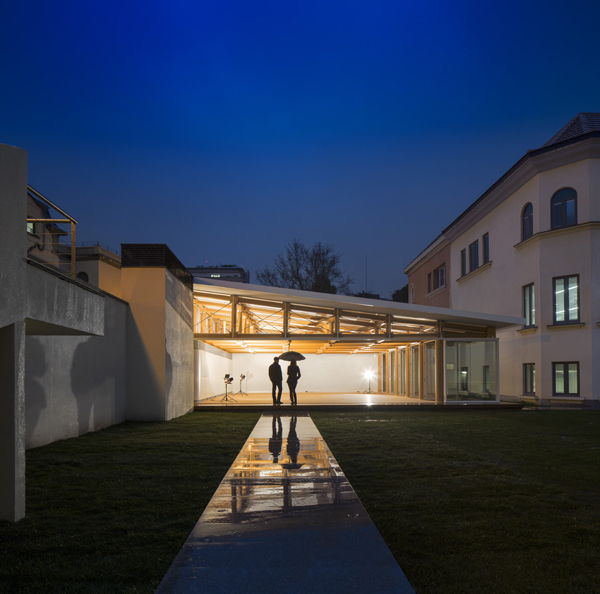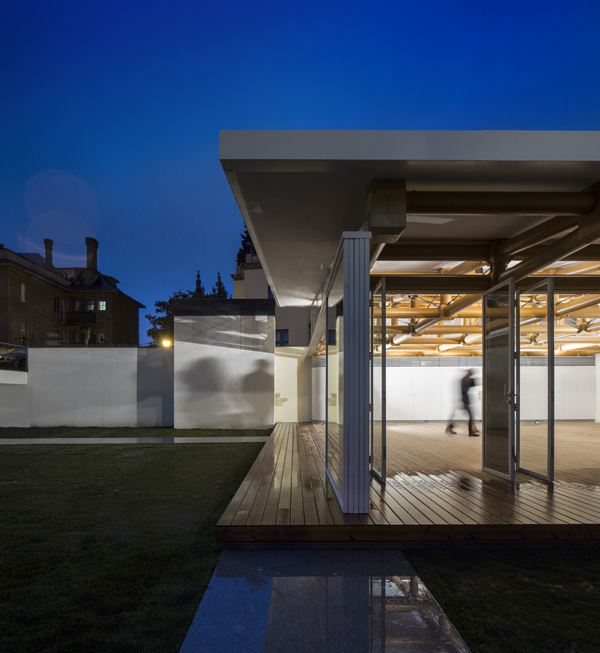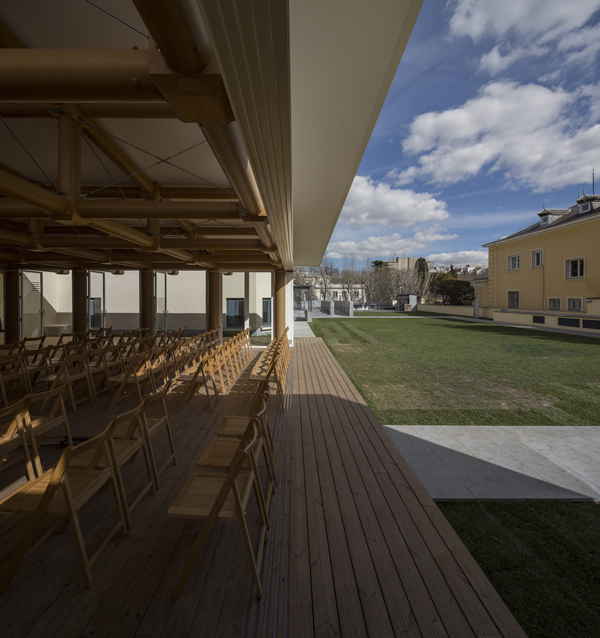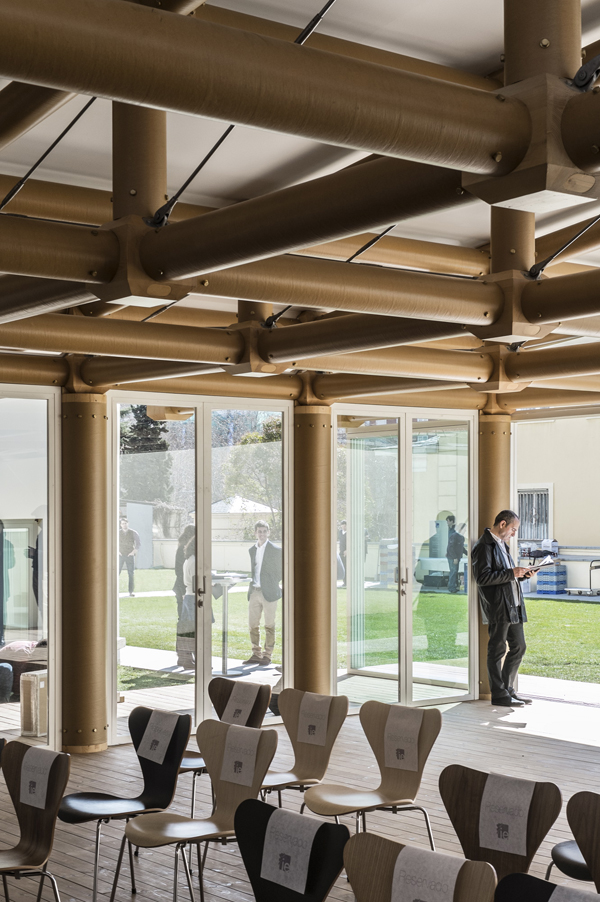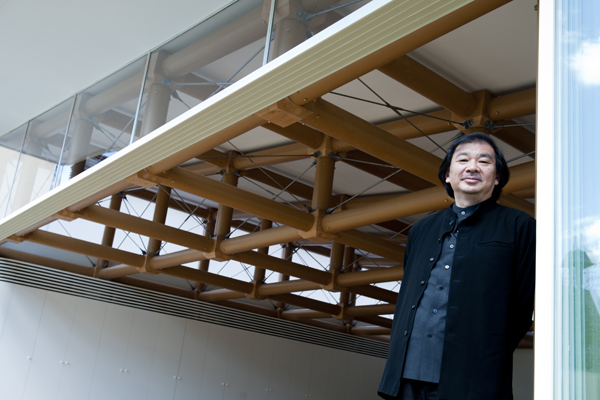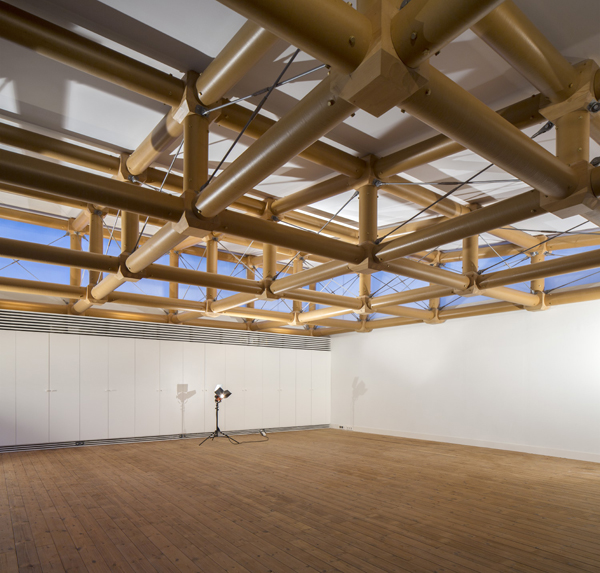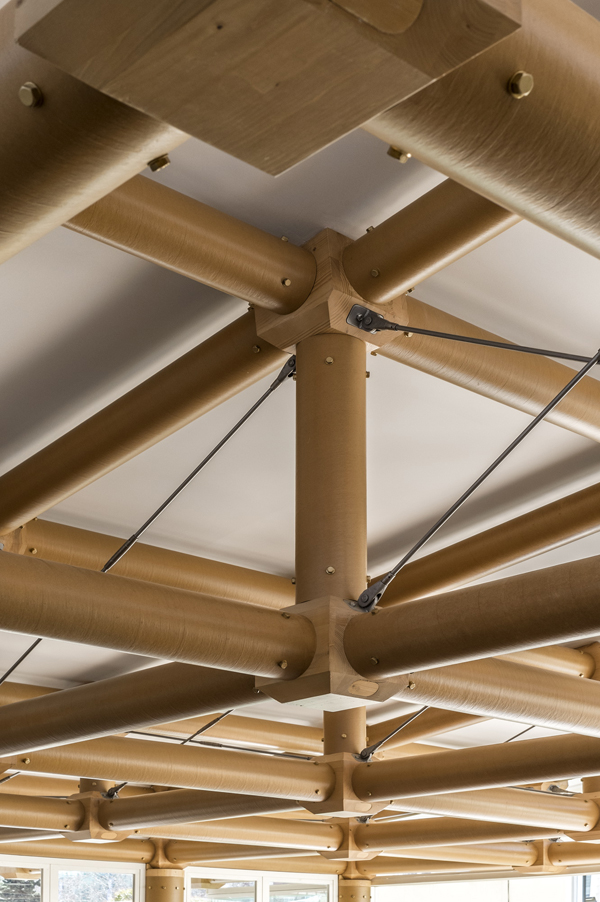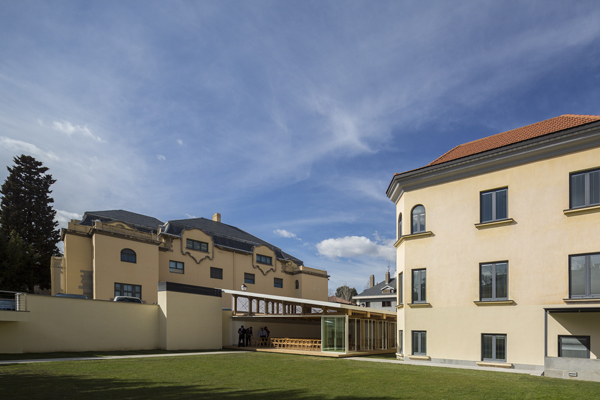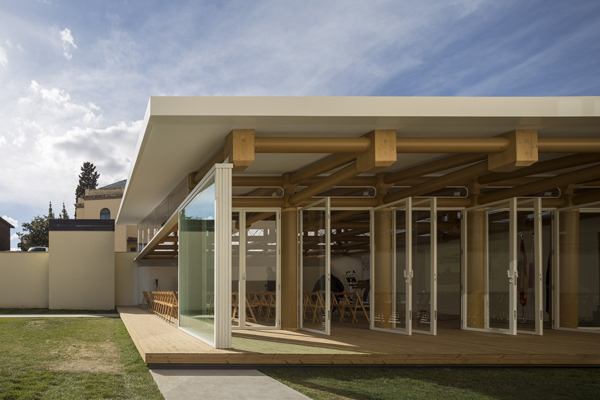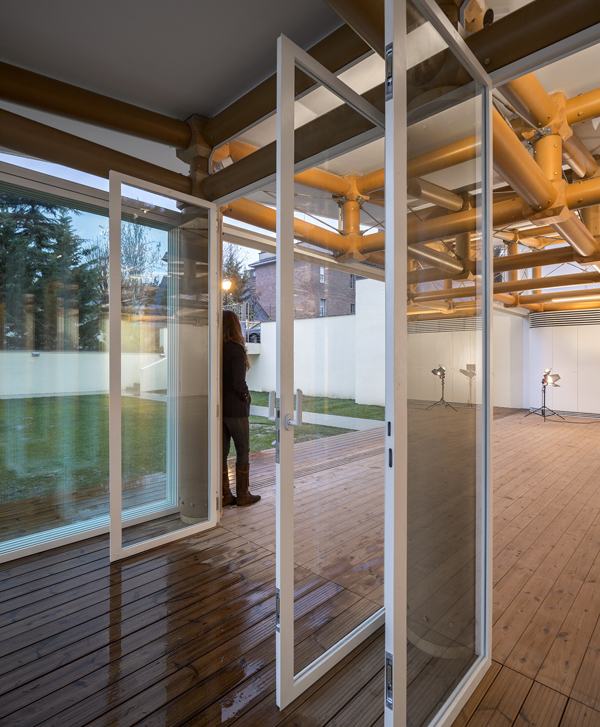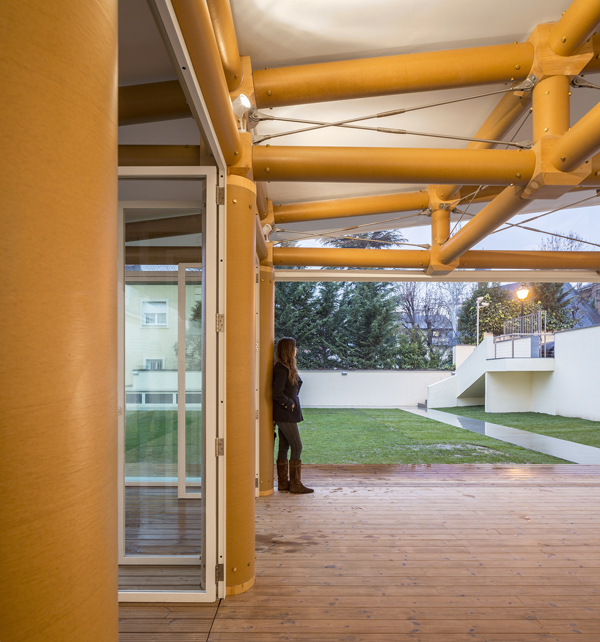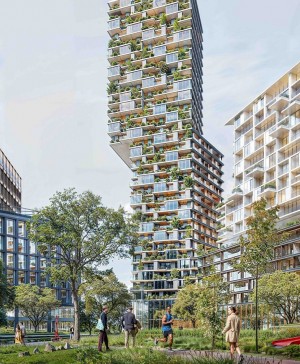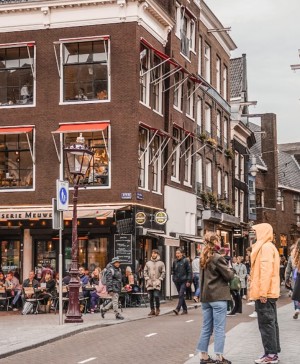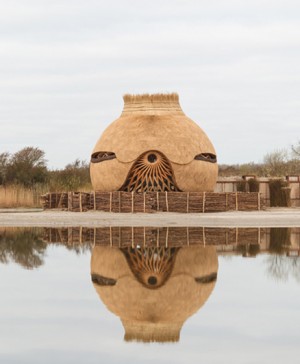Shigeru Ban designs a pavilion with paper tubes for the IE University campus in Madrid.
© Fernando Guerra
© Fernando Guerra
The pavilion will have multiple uses for the institution. In collaboration with IE University, LG has sponsored the building climate control with the Multi V III system.
© Fernando Guerra
© Fernando Guerra
Over the past decades, Shigeru Ban has become well known as much for using innovative materials as his commitment to projects that help on a human level.
© Irene Medina
For this project, the Japanese architect has worked together with Serrano Suñer Arquitectura studio. The installation consists of two spaces of 110 m2 and 30 m2 – being the latter an exterior area. It was put up in just 12 weeks. It is entirely formed of trusses made of cardboard tubes of 230 mm in diameter, which are connected by elements made of laminated wood. The entire structure is supported at only 10 points on the perimeter, leaving a completely open interior. Joining the tubes with the laminated wood elements is done with a simple tongue and groove joint that is screwed into place. In this way, the structure can be easily dismounted.
© Fernando Guerra
© Fernando Guerra
«One of the greatest challenges in any project is to design it according to the specific characteristics of the place,» says Shigeru Ban. «In this case, we used an existing wall as a support and tried to separate the structure as much as we could from the building next door.»
© Fernando Guerra
«In my work I always try to use local companies. In this case, the cardboard tubes were made in Zaragoza«. Shigeru Ban also had the help of the Architecture and Design students of IE University in the building process, which was considered by the architect as an important educational experience.
© Fernando Guerra
© Fernando Guerra
© Fernando Guerra
© Irene Medina
Shigeru Ban’s most significant works include the Centre Pompidou-Metz in France (2009); The Furniture House in New York, USA (2009), the Takatori Church in Kobe, Japan (2007) and the Japan Pavilion for the Universal Exhibition in Hannover (Germany), amongst others. He was named ‘Innovator of the Year’ by Time Magazine in 2001.

